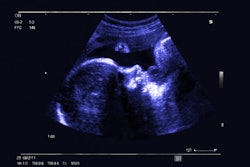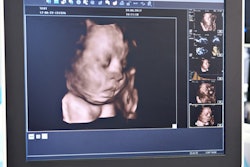A formal point-of-care ultrasound (POCUS) curriculum can improve the use of the technology by surgeons, suggest findings published November 4 in Surgery.
Researchers led by Anahita Jalilvand, MD, PhD, from Ohio State University in Columbus found that their curriculum led to significant improvement in skill and comfort with POCUS by surgical fellows.
This study demonstrated that incorporation of a dedicated ultrasound rotation into a surgical critical care fellowship was feasible and improved comfort level in selected techniques,” Jalilvand and colleagues wrote.
While POCUS continues to show its clinical utility, the researchers noted that there are no official guidelines for POCUS training during surgical critical care fellowships.
Jalilvand and co-authors investigated how comfortable and competent surgical fellows are in using POCUS before and after being in a rotational program. For the yearlong program, seven surgical critical care fellows participated in rotations. The ultrasound rotation consisted of one month divided equally between interventional radiology and echocardiography. This included dedicated lectures and training with interventional and echocardiography technicians. POCUS training focused on thoracic, abdominal, and vascular imaging, as well as basic echocardiography techniques.
For the study, technicians assessed how the fellows were skilled in probe orientation, location, image manipulation, machine adjustment, and image quality. The researchers used a seven-point Likert scale to measure these assessments, with a score of 1 meaning “not at all” and 7 meaning “yes/very much.”
The researchers found that the fellows showed improvement in comfort with ultrasound-guided techniques. These included focused assessment with sonography for trauma, drainage procedures, volume status, and cardiac assessment.
| Likert scale scores of surgical fellows before, after POCUS rotations | |||
|---|---|---|---|
| Before program | After program |
p-value | |
| Probe orientation | 5 | 7 | 0.02 |
| Probe location | 5 | 7 | 0.02 |
| Image manipulation | 5 | 7 | 0.02 |
| Machine adjustment | 5 | 7 | 0.02 |
| Overall image quality | 4 | 7 | 0.02 |
“All fellows reported the course significantly improved their skill, comfort level, and was worthwhile,” the researchers wrote.
They added that future iterations of this curriculum will focus on creating an easy method for uploading bedside images.
The study authors highlighted that despite the small cohort in their study, the results add to the growing literature base on ultrasound training in critical care specialties, “which is widely recognized as an educational gap.”
They called for future studies to focus on how to provide longitudinal evaluation throughout the fellowship and find out what aspects of this curriculum are the most important for skill development.
The full report can be found here.



















